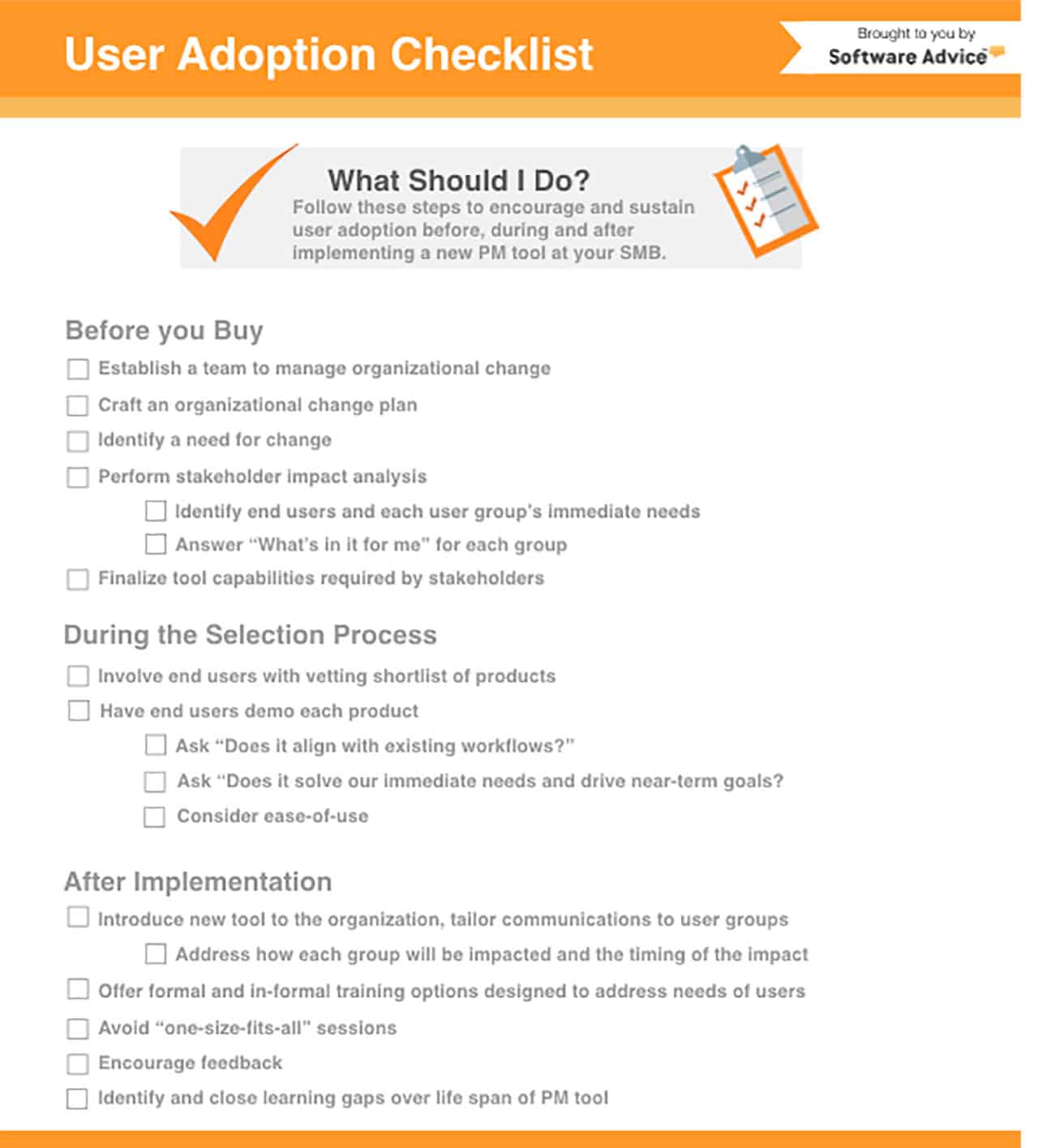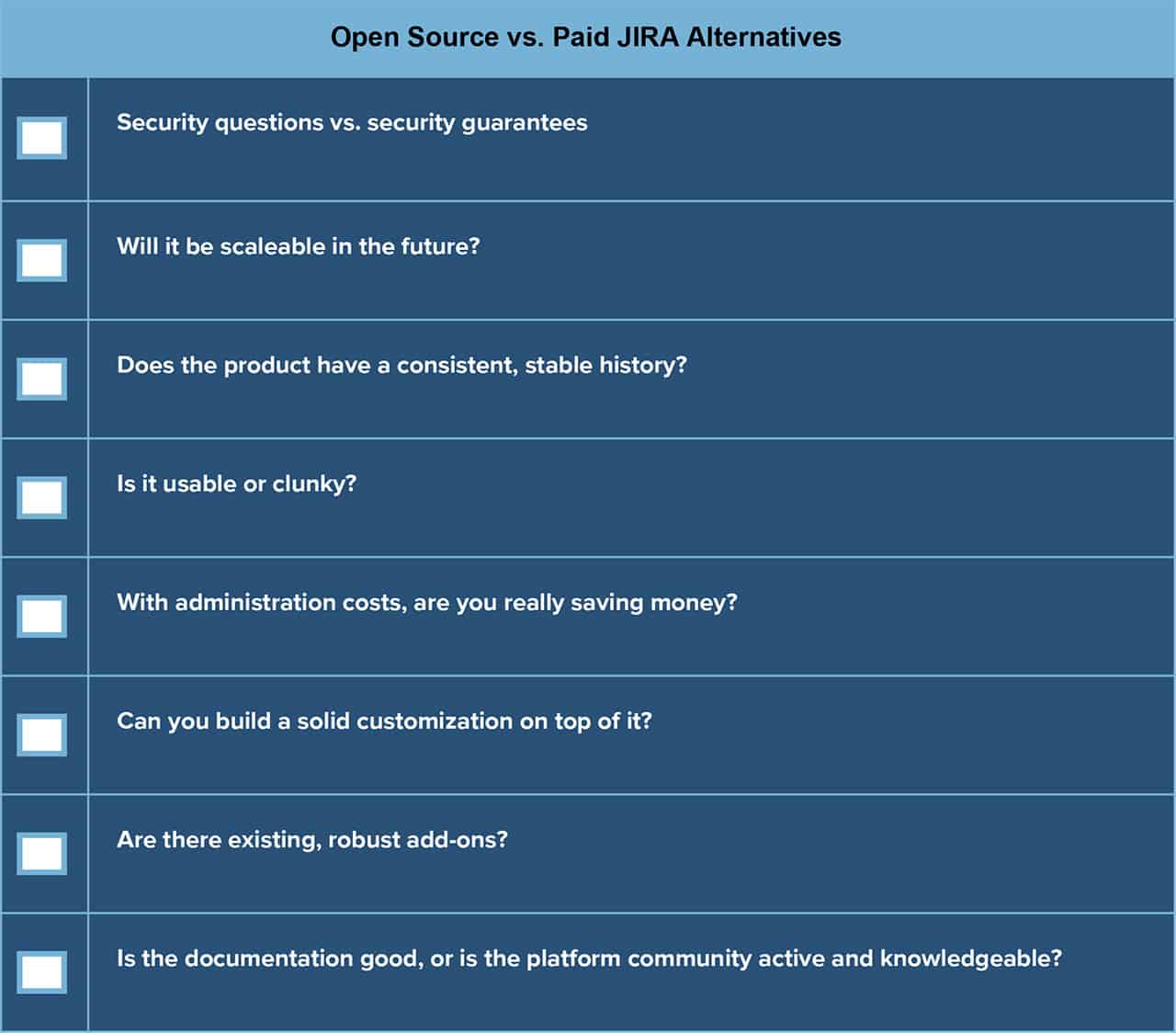What Is Jira?
First released in 2002 by Atlassian, Jira is a widely-used project management and issue tracking platform. Atlassian promotes Jira as providing one tool for the whole team, serving every role, and as “the #1 software development tool used by Agile teams.” Indeed, Jira comes with many capabilities, including integrations with other Atlassian products and both native and external add-ons. The software can provide an almost end-to-end project management solution. Here’s a high-level view of what Jira offers:
- One tool for the whole team
- Support for Agile, with Kanban boards and Scrum backlogs and sprint planning
- Charts, including burndown and cumulative flow charts
- Out of the box use (although this is situational)
- Customizable fields, dashboards, and workflows
- Native mobile support
- Scalable software to accommodate team growth or shrinkage (you can also add or remove projects)
- A suite of complementary products for collaboration, code review, version control, and documentation
Although Jira has a lot of capabilities, it also has a price. A cloud-hosted subscription for an individual or small team is $10 a month. The costs increase if you add more than 15 team members or choose paid add-ons, such as Confluence for wiki and documentation. Therefore, many companies investigate free alternatives to Jira.
Understanding Jira Alternatives
There are several alternatives to Jira - your choice depends on what you want to do with the software and what you want to pay. One flexible and potentially cost-effective software is open source: software offering a license that allows you to view, change, and distribute its source code. Sometimes, the code is even distributed free of charge.
Pricing Models for Jira Alternatives
So, how exactly does free software work? The following table explains some of the pricing models.
| Pricing | Payment Model | Open source |
|---|---|---|
| Paid or Commercial | May be increasing prices for extra users or available for a flat minimum rate. | Not available. |
| Freemium | Basic. Tiered pricing structure. The first level of functionality is offered free for limited uses. Examples include free for up to five users, for one team of three users, for one project, or for basic functionality, such as boards, file sharing, and communication. | Free for a limited number of users, or free if self-hosted. |
| Freemium | Next level. The small business alternative. Minimum cost for more users or users and projects, or more features. Sometimes you get priority support and documentation, or a monthly fee per user (up to a certain number of users). You may be discounted up to 20 percent for an annual license. May include more features such as customizations, single sign-on (SSO), external integrations, or issue tracking and extra file space | Minimum monthly cost for a larger number of users, as low as $5, with maintenance and support. OR
|
| Freemium | Enterprise. Increased cost for more users or projects, or more features. Sometimes priority support and documentation are added. Monthly fee, or a minimum fee per user, up to a certain number of users. May get a discount of up to 20 percent for an annual license. Concierge support with quick response time. Can also be self-hosted for a large number of licenses. | Monthly cost per host, with concierge support or hosting for a minimum number of users. |
| Free | Offered at no cost. Self-hosted. Basic functionality such as to-do lists or program hosting. Some offerings have been free through 2016, but are transitioning to a paid structure. They advertise easy installation and usability and may offer some roadmap commenting and other features, including a mobile version. | Open source options can offer a lot of functionality, but are self-hosted. |
Functionality in Free and Open Source Jira Alternatives
Now that you have an idea about the pricing structures, you may be wondering what you actually get for free. At least one open source program offers the majority of Jira features for free - support for multiple users and projects, customizable role-based access, issue tracking, time tracking, Gantt charts, wikis, notifications, issue creation by email, and SCM integration capability. Depending on the focus (bug tracking, task management, or project management), other programs offer variations on these feature sets, including Jira Agile alternatives. These are some of the features available in open source and free software:
- Agile support
- Release planning and roadmaps
- Issue tracking
- Issue monitoring
- Real-time status reports
- Source control
- Multiple projects and users
- Project wikis
- Drag-and-drop functionality
- Time and cost reporting
- Code review capability
- Localized interface and source code for projects
- Role-based access control
- Analytics
- Custom fields
The downside is that free and open-source software is often self-hosted, which means that you rely on forums, documentation, and your server admin resources to maintain the product. The software itself may be localized, and sometimes localized code is available for developing your own products. However, the localization may be crowd-sourced, which can pose some difficulty - maybe a native speaker understood the nuance of his or her own language, or an engineer picked the most inaccessible phrasing possible. While free and open-source software can be a great cost-saving route, you should consider these challenges when evaluating different options.
Jira Users Discuss What They Look For in Software
How do you choose if free or paid software is best for your team or organization? Mike Cargian is the Director of Technology at Madwell, a full-service Brooklyn-based creative agency that provides integrated marketing and advertising. He names price and ease of setup as two important considerations. “Choosing a bug tracker depends on your users (especially the customers reporting the bugs), and your internal workflow,” he says. “Jira is not just a bug tracker, but also provides custom workflows for routing bugs and other tasks through your company.”
For Sarah Meerschaert, PMP, control over permission levels is important. “I always look for something that can support multiple permission levels and can create multiple projects/sections under a single umbrella,” Meerschaert says. “There are always going to be features (like deleting tickets) or projects (like early development efforts or not yet patented efforts) I want to make sure are accessible to those who need them, but also kept secure.”
In addition, Meerschaert likes flexible reporting that helps the team extract data and display it in other programs, if necessary. “Inevitably there's a metric that will be important to my team and not part of the standard reporting options. If my reports/metrics look good, I/my team look(s) good,” she says.
Considerations for Open Source Jira Alternatives
With so much potential capability, an open source tool can seem like the obvious choice. Cargian says that having the capacity to host and maintain a product is a major consideration. “For many businesses a turn-key hosted application makes more sense,” he says.
Eileen O'Loughlin of PM consulting firm Software Advice agrees. “Free or open source task and project management (PM) software can be a great stepping stone for small teams or organizations that are just starting out and maybe don’t have a budget for a robust PM system,” she says. “But as teams grow, the IT costs associated with maintaining an open source system on a business’s internal servers may outweigh the initial cuts in cost.”
Open source may have a couple of strong capabilities, but (depending on your company size and needs) you may quickly outgrow the program. Down the line, it might require an upgrade to one of the paid versions or to another program. Additionally, open source software can present security concerns, especially if it’s web-based.
Meerschaert finds that good design is also a concern. “One lesser issue - but one that shouldn't be discounted - is usability. Some open source tools can be quite easy to use, but many are a bit clunky and confusing. A hard-to-use tool can cost time and energy.” On the other hand, she finds that support may be valuable: “On occasion, I've even found that open source platform communities can provide better support and documentation than some very expensive platforms.”
“Ultimately, I find that right after the make or buy analysis, open source versus paid can be the next most challenging problem teams can face as they move forward in addressing their web platform needs,” Meerschaert adds. You need to determine whether the software has shown a stable history, whether it scales, and the amount of risk your organization can tolerate. “For a larger, less risk tolerant company, the known plan for features and support from a paid provider can be the ideal solution. For a smaller or more risk tolerant (more flexible) company, going open source can mean saving money and adding customization as needed.”
O’Loughlin of Software Advice explains the business decision: “The business case for investing in PM software can be made by calculating total cost of ownership and estimating the return on investment, i.e., do the benefits gained outweigh the costs invested?” he says. “The better question becomes not if a business should invest in paid PM software, but when?”
Software Advice also offers the following checklists for choosing paid software. The considerations can apply to programs with any type of license.
Checklist: Open Source vs. Paid Jira Alternatives
Open source software may be the solution for your group or company. When considering whether to buy or not, it comes down to these considerations:
Ultimately, the “right” Jira alternative is a subjective: consider your company’s needs, budget, and growth over time, and talk to the people who will be using the software to ensure it will work for them. Many programs offer free trial periods (up to one month), so take advantage of these offerings before investing in a product.
Easily Integrate Jira Data Into Smartsheet
Empower your people to go above and beyond with a flexible platform designed to match the needs of your team — and adapt as those needs change.
The Smartsheet platform makes it easy to plan, capture, manage, and report on work from anywhere, helping your team be more effective and get more done. Report on key metrics and get real-time visibility into work as it happens with roll-up reports, dashboards, and automated workflows built to keep your team connected and informed.
When teams have clarity into the work getting done, there’s no telling how much more they can accomplish in the same amount of time. Try Smartsheet for free, today.

